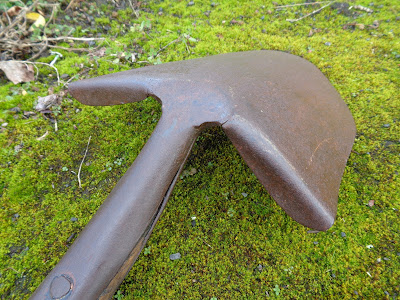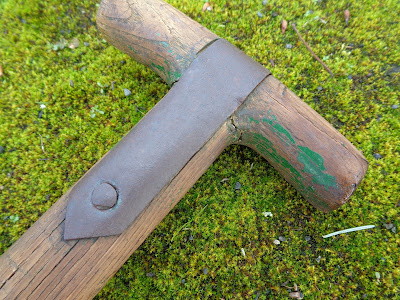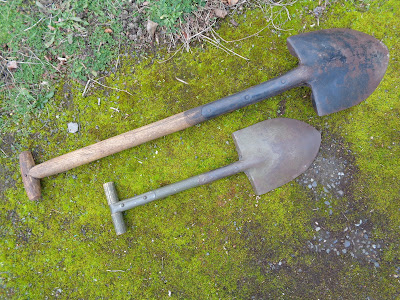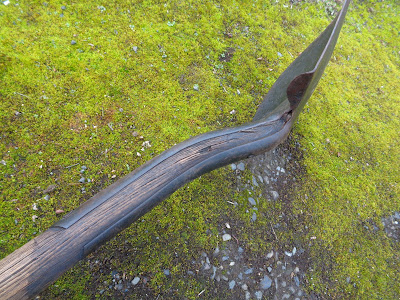Well, as promised, here is the third shovel in my recently acquired British General Service trio.
This shovel is yet another distinct version of the GS shovels. The previous two were from WW2, and this one is a post-war version.
You can read about the two previous, WW2 shovels here, as well as the history of the GS shovel style:
http://sharky-fourbees.blogspot.com/2020/11/british-general-service-shovel-gs-ww2.html
http://sharky-fourbees.blogspot.com/2020/12/british-general-service-shovel-gs-ww2.html
This third shovel is dated 1954, and was made by the C. T Skelton & Company of Sheffield, England. There is an excellent company history here:
http://trowelcollector.blogspot.com/2014/12/history-of-ct-skelton-co-tool-maker.html
The shovel is stamped with the British Broad Arrow acceptance stamp and also has an ID number of some sort stamped: H.2353 I have no idea what the number means, but it appears to have been stamped at the same time as the date and maker's stamp.
The handle is a T-Handle, with a metal strap reinforcement. The wooden "T" has a a slight curve to it.
The blade has a welded front and back, forming an integral socket for the handle.
Originally the blade was painted black, with the paint extending up the wood handle a short distance. There is still a bit of the original black paint visible, here and there. Around the T-Handle, there are traces of a lighter, and brighter, green (not OD military green).
Although this shovel is dated 1954, it is identical to other shovels produced during WW2. As I mentioned in previous posts, the GS shovels remained virtually unchanged for years and years.
In 1956, the British Army went to war in Egypt, with the Israelis and the French. They joined forces against Egypt, in what was called the Second Arab-Israeli War, or Suez Crisis. This shovel may very well have served there, since it is dated 1954. Here is a photo of a group of British Royal Engineers, on the beach, during the war. The shovel in the photo is a GS shovel.
Overall this is a very well made, and very solid shovel. The blade on this one is exceptionally well made, and quite thick and reinforced near the socket shaft. There are two small cracks on the upper edge, that are a testament to the hard use this shovel was put to.
If you haven't read up on these shovels yet, pop back to the previous two blog posts and review their history. Now on to the photo album. Enjoy!










































